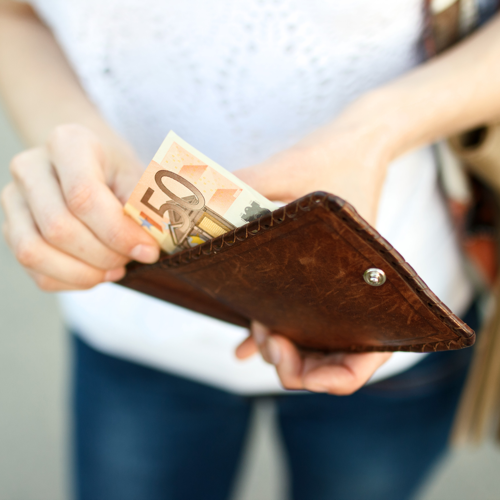
- Three minutes read
Cash: still king after all these years
How cash is evolving to remain relevant in the payments ecosystem
Revolutions come and go, but the important ones create a legacy that lasts for decades. When John Shepherd-Barron and his team at De La Rue Instruments Ltd. invented the modern automated teller machine, they may not have been aware of the profound impact their invention would have on the world. But exactly fifty years since Barclays opened the first ATM at its Enfield branch on 27th June 1967, their invention remains a vital component of the fabric of our global economies. Three million machines later, the ubiquity and self-serve convenience of the ATM are keeping cash at the centre of consumer spending; key drivers for commerce and financial inclusion everywhere in the world, according to a report by the ATM Industry Association.
That fact has many ongoing implications for businesses of all kinds and sizes – not least as an indicator of the critical role that cash still plays in the evolution of the digital financial landscape. For years, we’ve been reading stories about the imminent death of old-fashioned hard currency. We’re all going to be spending money via digital wallets and smartphone apps, according to this narrative, and physical notes and coins will quickly become obsolete in the process. Endless studies appear to show that the cashless society is indeed nearly upon us; one recent survey commissioned by ING’s eZonomics website showed that more than a third of Europeans and Americans would willingly forgo cash in favour of digital alternatives.
Such studies conveniently ignore key facts about the role of cash in our societies. It’s still a major force in every country; it’s still the most popular payments mechanism in the US, according to the PYMNTS.com Global Cash Index, especially among low-income families. 45% of UK payments were made in cash in 2016, says a recent Payments UK report, and 79% of UK consumers say that they would never go completely cashless. Growth in cash payments is forecast across many European countries between now and 2020 – more than 22% in Italy alone, according to the same source. And in Kenya, home of the M-PESA mobile payments system, cash still accounts for 98% of the value of all transactions. Reports of cash’s death are clearly very wide of the mark indeed.
Cash has many clear benefits for parties on both sides of a retail transaction. It’s very quick. It’s private and largely anonymous. It authenticates itself pretty reliably in most cases. It works the same way regardless of where you live. To many consumers and savers in our post-2008 crisis world, it can still seem like the safest option; physical money is money that you own and control, a fact likely to make it even more attractive in regions of economic uncertainty.
These facts seem almost too obvious to mention. But they’re all part of cash’s growing relevance to the digital payments world. That relevance grows significantly when you consider what a convenient mechanism cash is for getting funds into the very digital wallets and apps that the survey brokers claim will replace it. That’s been the key to the success of Kenya’s M-PESA, the world’s most successful mobile payments and transfers initiative, now used by more than two-thirds of the country’s adult population.
Today’s fintech revolution is enabling cash and digital to merge in a variety of other innovative ways. Pre-paid cards and vouchers bought from retail outlets, in particular, allow consumers to pay for a huge variety of goods and services online by simply entering the card’s unique PIN number. Our own paysafecard has been pioneering in this area for many years, allowing shoppers to buy from over half a million online merchants including high-profile, mainstream brands such as William Hill, Spotify, Skype and Playstation. But paysafecard’s tricks don’t end there; it can also be used to top up Skrill digital wallets and smartphone apps with fixed denominations, for example, without the need for bank transfers. It’s cash made truly digital; a way for shoppers to spend money from their laptops or on their daily commute, without having to provide bank or credit card details to merchants.
Evidence of the value of services like paysafecard is growing rapidly, as other models emerge that blend cash and digital in similar ways. Amazon has recently launched a new cash-based service in the US, for example, allowing shoppers to operate bank-free accounts that are topped up with cash at participating retailers – thus opening the door to a large swathe of potential new customers who still prefer the convenience and safety of cash transactions.
Despite all this activity, cash remains a large and underserved niche. More than 2 billion people around the world still have no access to financial services, according to the World Bank; people for whom cash represents the only real option when it comes to dealing with money. That’s exactly why Paysafe is working hard to ensure that it continues to superserve this currently underserved element of society; a core guiding principle for every aspect of our business, cash-based or otherwise, as we continue to lead the search for new and innovative digital payments applications. Whether it’s dispensed by ATM technology that’s now half a century old or managed by the digital wallets of the smartphone era, cash is still king – a fact that will keep it on the Paysafe roadmap for many years to come.




